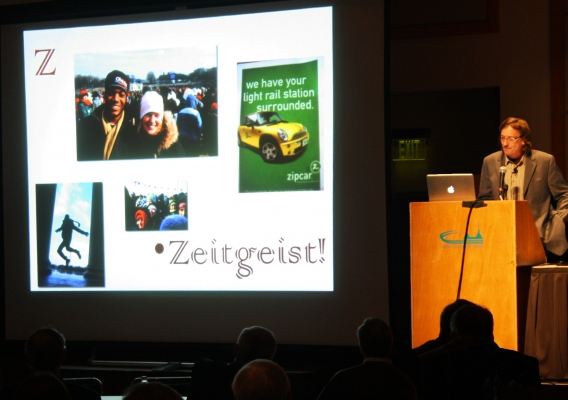If anyone doubted Detroit could produce a reliable electric car that can be charged at home and make several trips without recharging, the proof was parked in the Oregon Convention Center: a 1917 Detroit Electric. Production of that car, which could travel up to 80 miles on a charge, began in 1907.
The Detroit Electric and conceptual descendents, such as the sporty Tesla Roadster and Nissan Leaf, served as backdrop to E.V. Road Map 3, a forum to discuss the benefits of electric vehicles and plan for their future. Sponsored by Portland State University and Portland General Electric, the conference came at a turning point for electric vehicles, said John MacArthur, director of OTREC’s Transportation Electrification Initiative.
“Once 2011 hit, we went from the theoretical to the applied,” MacArthur said. “Automakers are rolling out the vehicles, charging stations are popping up, and now they’re starting to be seen and tested.”
Perception remains the largest barrier to wider adoption of electric vehicles, he said. “There’s still this ‘range anxiety’ out there,” that is, people worry if the car has enough juice to get to their destination and back. “But once they drive one, they realize it’s not a big deal.”
That’s because...
Read more
